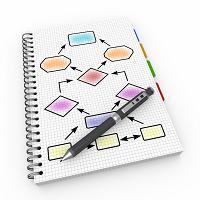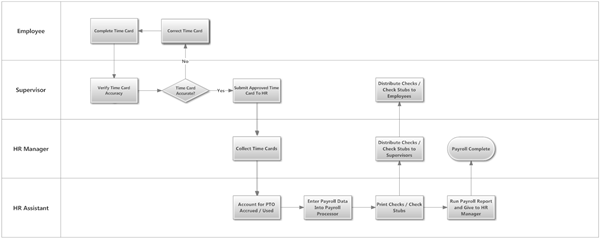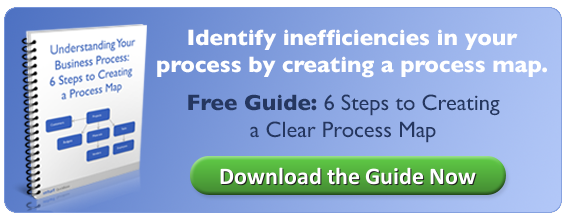 Many companies rely on repeatable processes to complete tasks, which is beneficial. However, if these processes are not documented, various issues can arise that may disrupt workflow and negatively affect your customers or cash flow. That’s not ideal.
Many companies rely on repeatable processes to complete tasks, which is beneficial. However, if these processes are not documented, various issues can arise that may disrupt workflow and negatively affect your customers or cash flow. That’s not ideal.
It’s not difficult to document work processes, but it does require some time. However, this time is valuable because it will help you find out if the processes are efficient or if there are steps that can be removed or changed. If you’re preparing to automate some of your tasks, documenting your current processes is essential.
Using a step-by-step method to document your processes will help you get it done quickly and efficiently. Over the years, I’ve used (and taught) a ten step method many times over with success. It can help you too.
A Quick, Ten Step Method For Documenting Business Processes
This method works best when all participants can see what’s being created by using a flip chart or white board. Make sure you have the right people in the room who know what’s involved in accomplishing the process.
Step 1 – Process Name. To get started, write the name of the process along with a description on the flip chart.
Step 2 – Process Boundaries. Identify the start and end points of the process. What triggers the process to start? How do you know when it’s done?
Step 3 – Process Outputs. Identify what’s produced by the process.
Step 4 – Process Inputs. Identify what’s needed to perform the process and where it comes from (e.g. paper, web, fax, etc.)
Step 5 – Process Activities. Brainstorm the activities (what) that need to be done to get the process from start to finish. State these in a verb / object format (e.g., approve request, sign paperwork, distribute form, etc). Don’t worry about sequencing the activities at this time, just brainstorm freely. Sticky notes can be very effective for this step. Just write one activity on each note.
Step 6 – Process Organization. Take all the brainstorm items you identified and sequence them into the process flow. Make sure you identify key decision points as you build the visual of your process.
Step 7 – Process Review. Take a look at the sequence as a first quality check. Does it look complete based on the boundaries you defined in Step 2?
Step 8 – Process Roles. Identify the roles (who) that will be completing the activities for the process. Assign a role to each activity step.
Step 9 – Transcribe Process. Place the steps into a flowcharting software program in a swim lane format.
Step 10 – Final Process Review. Get the participants together and review the process flow. Secure approval by all team members.
Put It All Together
Here’s an example of a documented process to help you see how it all comes together.
Process Name: Pay Employees
Process Boundaries: Employees work for one week and get a paycheck or check stub if on automatic deposit.
Process Outputs: Employee checks or stubs, payroll report, updated PTO records
Process Inputs: Employee time cards
Process Activities: Completed and verified employee time cards, time cards delivered to HR, PTO records updated, data entered in payroll processor, checks or stubs delivered to employees, completed payroll report generated.
Process Roles: Employee, Supervisor, HR Manager, HR Assistant
And the transcribed process in a swim lane format would look like this:
Your Next Steps
Once you have the processes documented and approved, your next step will depend on what actions you plan to take in your company. Whether you are making changes or not, it’s a good idea to take a look at each process to determine where there are opportunities to make the process more efficient.

